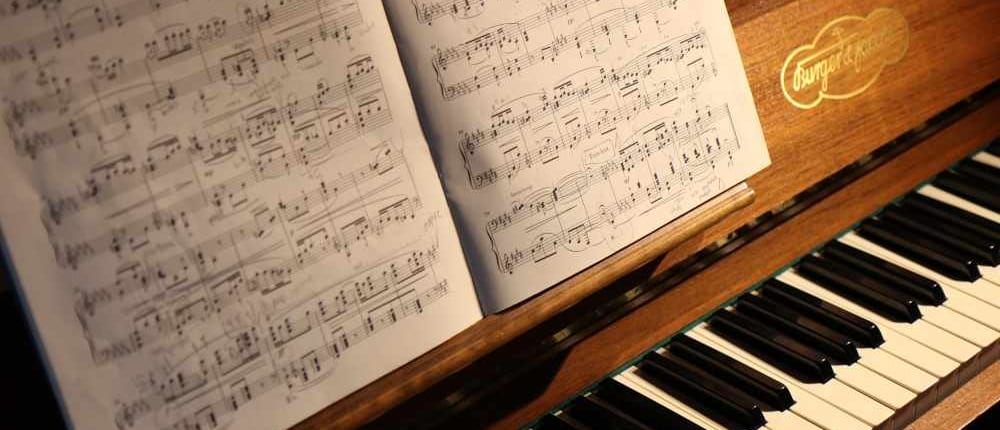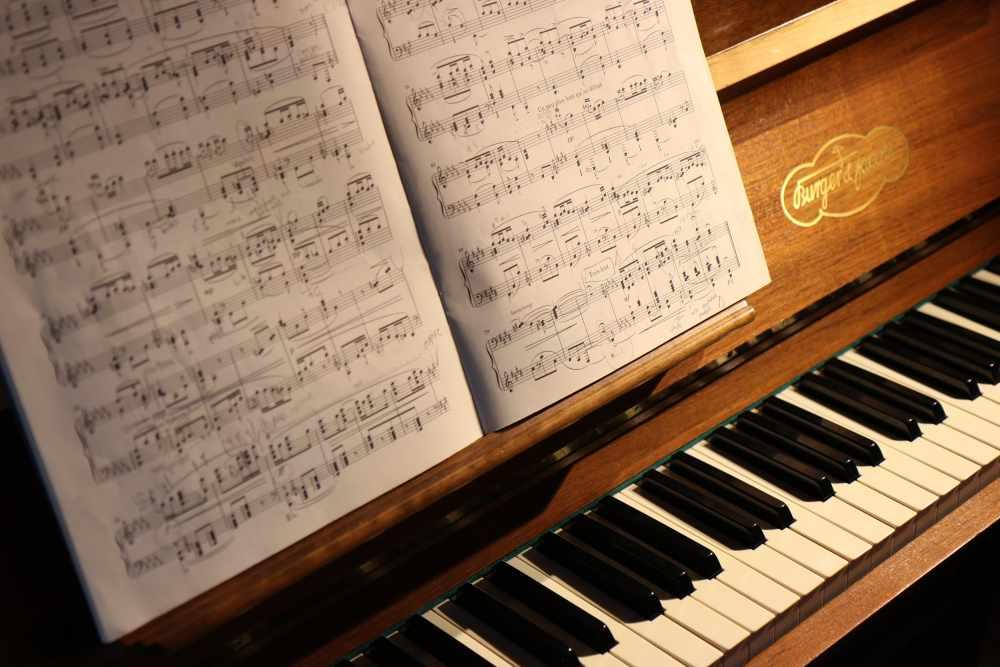
Are you interested in learning how to sight read on the piano? Want to be able to sit down at the keyboard and play a favorite piece by simply glancing at the sheet music? Piano sight reading is one of the most important skills to learn as a pianist. In this article, we’ll look at 9 sight reading tips for pianists.
For more sight reading tips, check out this helpful video tutorial:
What is Piano Sight Reading?
Sight reading is the ability to look at a piece of music and play it with very little to no prior rehearsal time. Piano sight reading is simply the ability to do so on the piano. This is a skill every pianist needs to become familiar with, even if it means they are only able to sight read pieces that are at or below their level of repertoire-performance.
What Else Does Sight Reading Involve?
Sight reading not only involves reading notes, but also encompasses implied musicality. A pianist should be able to take musical queues and respond appropriately when paired with other instrumentalists or singers. Phrase shape, texture, and mood should all be considered when sight reading a piano piece.
Why is Piano Sight Reading Important?
A good sight reader will almost always have employment options available, including working as an accompanist, as a pianist with a choir, a studio musician, church pianist, and other options. Additionally, a pianist who has strong piano sight reading abilities will often be able to learn music at a much faster rate than those who can’t read as well.
What’s the Difference Between Being Able to Read Music & Being Able to Sight Read?
It’s the difference between reading one letter at a time and reading one word at a time. Just imagine how long this article would take to read if you could only read one letter at a time.
How to Sight Read on the Piano: 9 Easy Tips
Below are some helpful sight reading tips for pianists. These will assume that you have at least a few minutes to look at a piece before you have to play it. Let’s get started!
1. Flashcards
Memorize the notes on the piano! If you spend just 10 minutes a day, you’ll have the majority of the notes that are within the lines (not on ledger lines) on both the Treble and Bass Clefs memorized within weeks.
2. Always Think Musically
It’s very easy to get sucked into thinking that you have to play all of the notes perfectly and forget the innate musicality of what you’re playing. Even in piano sight reading, therefore, think of the musicality that defines the piece and do your best to bring that out.
3. Think Contour, Not Note Name
This is one of the most important sight reading tips for pianists. Don’t try to read every note. Look at the contour (or direction) of the notes. Do they go up or down? By how much (whole-step or half-step)? By taking this approach, you’ll be able to easily read passagework that would take longer to read if you were trying to read every note separately.
4. Remember Your Scales
Do you see a succession of notes going up or down the staff? Are there sharps or flats? What note does the passage start and end on? Does it skip any notes? If you ask yourself questions like these, you’ll find that many of the scale-like passages within pieces use fingerings from scales that you already know.
5. Practice Easy Pieces Based on Closed Hand Positions
Practice pieces that use five-finger positions that don’t give them the note-names or finger numbers except for the ones at the beginning of a piece. This forces you to look at the contour and internally distinguish what finger is playing each note.
6. Read Ahead as Much as Possible
When learning how to sight read on the piano, you always need to be a few notes ahead of what you’re actually playing. In essence, after you read something, you should already be reading notes ahead of what you’re playing.
7. Practice Reading Hands Separately
Practice reading each hand separately, but preparing the other hand for its section well before it actually needs to play. This piano sight reading exercise is more important than it sounds. The biggest obstacle many students face is the lack of preparation of the opposing hand.
8. Play Through the Piece Without Stopping
Piano sight reading is as much about reading notes as it is about supporting other musicians. In many cases, a sight reading pianist is often playing in an ensemble. Therefore, you cannot stop playing. Even if you can’t read all the music, always keep counting and play what you can, when you can. Continue to play and count even when you make mistakes, no matter how severe they are.
9. Familiarize Yourself with Note Combinations
Chords and triads are the building blocks of harmony. Learn all the major and minor chords that can be played on white keys (C, D, E, F, G, A, B Major & Minor). Now memorize the letter combinations that make up each chord. For instance, E Major = E, G#, B ; E Minor = E, G, B, etc. Move on to black key combinations, inversions, and seventh chords. There will come a point in your piano sight reading when you’re seeing things more as chords, and less as individual notes, which will save you time and energy.
Now, You Know How to Sight Read On the Piano!
All you have to do now is practice! For a student, this skill set will enable you to learn music faster, more accurately, and spend less time working on trying to read every note. If you’re interested in exploring a career as a musician, piano sight reading will open up career pathways and job opportunities.
I hope that some of these sight reading tips for pianists will be helpful and give you some new insight into the world of music!
Photo by Frédéric BISSON
 Post Author: Ryan C.
Post Author: Ryan C.Ryan C. teaches piano, ear training, and music theory. He is a graduate of San Diego State University with a B.M. in piano performance. Learn more about Ryan here!
Brooke Neuman

